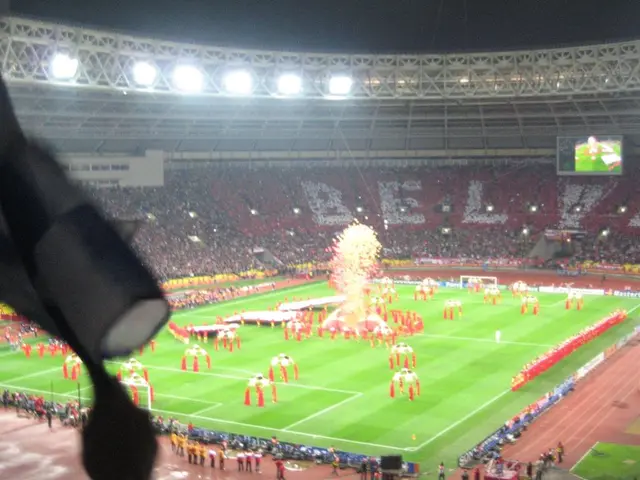"Let us prevent automobiles from embodying ecological refusal and the division within France"
A Tangled Web: Navigating France's Low-Emission Zones
Traveling across the French landscape, I've witnessed firsthand the turbulent waters of Low-Emission Zones (LEZs) that have left many folks scratching their heads. From Rennes to Marseille, Strasbourg, Toulouse, Reims, and beyond, the chatter about these zones is a constant hum. Despite our diverse backgrounds and viewpoints, we all agree on one thing - the subject of LEZs is as confounding as a medication list in a dozen different languages.
In a 2024 survey by the Roole observatory, a staggering 60% of the French population shared their frustration by confessing they were "very poorly informed" about this measure. And it's not just city-dwellers in densely populated communes who are in the dark. Only 35% of rural commune residents claimed they were "well informed," compared to 45% in heavily populated areas.
Things get messy when you delve beneath the surface of those cold letters and numbers that make up the acronym LEZ. Behind the technocratic ring, there's a kaleidoscope of concrete concerns about threats to daily life, including fear of exclusion, a sense of injustice, and a feeling of being walked all over.
Shades of Gray: The Crit'Air Sticker System
In France, LEZs require vehicles to sport a color-coded Crit'Air sticker, a system that's as complicated as a Rubik's Cube. These stickers indicate the pollution levels of a vehicle and allow (or disallow) entry into certain urban areas. The problem? Each city sets its own standards, with some enforcing restrictions only during peak pollution periods, while others maintain permanent zones.
Moreover, the shifting landscape of rules and boundaries leaves many drivers "in limbo." Communication about when and where restrictions apply can be murky, especially when traveling between different cities or entering through specific exemptions. It's like playing a game of Bingo where the winning numbers change every few minutes.
A City vs. Country Divide
Urban areas witness the benefits of improved air quality and public health as a result of these restrictions, with studies suggesting they could prevent thousands of deaths annually linked to poor air quality. However, the policy disproportionately affects lower-income residents who may not be able to afford newer, cleaner vehicles, leading to resistance and calls to reconsider the policy.
On the other side of the fence, rural areas are less directly affected, but they may still experience indirect effects such as increased demand for public transport and higher costs for those who need to access urban centers for work, healthcare, or education. In a nutshell, life for those relying on older vehicles for crucial travel is made more complicated, and the burden of upgrading to compliant vehicles is often financially insurmountable.
The Path Forward: Clarity, Equity, and Collaboration
The inconsistent implementation of LEZs has led to a confusing landscape, with some cities enforcing strict, permanent zones, while others take a more lenient approach, causing doubt and confusion. Local authorities must tread the line between public health benefits and social equity concerns, all while keeping their wallets from becoming too empty due to costly fines.
Public acceptance and political debate are ongoing, with some lawmakers arguing for the abolition or reduction of LEZs, citing their disproportionate impact on lower-income citizens. On the flip side, efforts to encourage public transit use are part of a broader strategy to make cities less car-dependent and more sustainable. Ultimately, success depends on clearer communication, equitable support for affected drivers, and a coordinated approach to urban and rural mobility.
In this complex web with no clear beginning or end, it's crucial to untangle the threads of confusion, ensure fairness, and provide a clear path forward. Only then can we breathe a sigh of relief and finally start to understand the intricate world of France's LEZs.
Enrichment Data:
While navigating the labyrinth of LEZs, it's essential to understand the complexities surrounding these zones. Here are a few key aspects that can help shed some light:
Direct Impact
Urban areas benefit from reduced levels of fine particulate matter and nitrogen oxides, leading to improved air quality and public health. However, rural areas are less directly impacted, with some indirect effects such as increased demand for public transport.
Public Health Benefits
Studies demonstrate that strict enforcement of LEZs could prevent thousands of deaths annually linked to poor air quality in urban centers. However, it disproportionately affects lower-income residents, leading to social equity concerns.
Policy Clarity
Rules and boundaries concerning LEZs are not uniform, resulting in confusion for drivers. Each city sets its own standards, with some only enforcing restrictions during pollution spikes or maintaining permanent zones.
Enforcement
Local authorities must balance the public health benefits with social equity concerns, especially as fines for noncompliance can be steep. The system is further complicated by exemptions and through-traffic corridors, which may not require an emissions sticker, increasing the risk of accidental violations.
Public Acceptance and Political Debate
Ongoing political debate centers around the future of LEZs, with some lawmakers proposing to scale them back or abolish them due to their disproportionate impact on lower-income citizens. On the other hand, efforts to encourage public transit use, such as fare-free trials and expanded high-speed rail, aim to make cities less car-dependent and more sustainable.
Conclusion
France's Low-Emission Zones aim to tackle urban air pollution and promote public health, but their implementation is fraught with confusion, social equity concerns, and political controversy. The success of these zones depends on clearer communication, equitable support for affected drivers, and a coordinated approach to urban and rural mobility.
- Amidst the debate surrounding LEZs, the populist movement in France has threatened to exclude the Crit’Air sticker system, arguing that it unfairly targets lower-income citizens who rely on older vehicles for essential travel.
- Despite theoffset threat of exclusion, sports enthusiasts in rural areas may face a challenge in accessing urban centers for competitions and events, as public transport options might become more popular due to LEZ emissions restrictions.
- To promote fairness and prevent confusion among citizens, authorities should consider implementing a populist approach that emphasizes reducing the financial burden on lower-income drivers while still enforcing emission standards in urban areas, ensuring a sustainable future for sports and public health alike.
![Array initialization method `[NSMutableArray initArrayWithArray:]` was invoked for a specific key path, followed by an object addition operation `[objectsForKeys:didWriteObject:]` to the roster.](https://asb-media.info/en/img/2025/05/07/1329633/jpeg/4-3/1200/75/image-description.webp)









